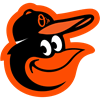Due to the inherent variance in a hitter's performance over the course of a 162-game season, knowing which metrics serve as the most predictive can be essential components of a daily fantasy baseball strategy. A harsh reality of MLB DFS is the inescapable fact that even the elite fail to get on base in over 60 percent of their plate appearances, which means you'll get a few goose eggs from anyone you roster, including the likes of Mike Trout and Bryce Harper. However, there are a few strategies you can use to help ensure you pick the right games more often than the wrong ones.
The Value of Weighted On-Base Average (wOBA)
There's certainly no shortage of numbers with which to measure a hitter's performance, so knowing which hold the most predictive value can be vital to creating a daily fantasy baseball lineup. While batting average, slugging percentage and on-base percentage are three of the most commonly cited statistics when discussing hitters, wOBA provides the most accurate picture of the value of each at-bat for any hitter. In essence, wOBA assigns each possible outcome of a plate appearance (i.e. walk, single, double, home run, etc.) its own unique and appropriate value in the hierarchy of offensive production. A hitter's wOBA can therefore provide you the best overall view of their performance at the plate, as well as their overall value to their team's offense.
Knowing Your Pitchers Simplifies Choosing Your Hitters
There is naturally a considerable correlation between the quality of pitcher on the mound and the production of the opposing team's offense, though the natural order of things is violated a handful of times each year for even the best arms. So while there are never any guarantees in baseball, knowing the strengths and weaknesses of the pitcher slated to face the hitter you're considering is an integral part of a daily fantasy baseball strategy. Evaluating a batter vs. pitcher matchup is a multi-pronged approach to be sure, and we'll touch on a couple of those aspects in a moment. However, with pitching performances one of the more consistent aspects of a variance-laden sport, it can be utilized as an important tool for building a daily fantasy baseball lineup.
In the Air and On the Ground
Home runs are the holy grail of daily fantasy baseball, offering you the best chance to make up a substantial amount of ground in your contests with a single swing of the bat. Knowing how prone the opposing pitcher is to allowing fly balls, or conversely, how likely he is to induce grounders, can help you hone in on where to invest on hitters. For example, putting 15-20 percent of your salary cap into a stud power hitter going against the Astros' Dallas Kuechel, who elicited ground balls on over 60 percent of his batted balls last season, may not be the most efficient use of resources on that particular day. On the other hand, rostering sluggers against the Royals' Ian Kennedy or the Yankees' CC Sabathia, two of the most home run-prone hurlers in the majors, certainly increases the chances of receiving some sizable returns on investment. Naturally, ground ball and home-run-to-fly-ball rates are not metrics that should be evaluated in isolation—a number of other considerations, including a hitter's history versus a pitcher and the ballpark dimensions they'll be hitting in, also come into play.
Batter vs. Pitcher Metrics - The Lightning Rod of Baseball Stats
Perhaps the most hotly debated topic in daily fantasy baseball strategy is the validity of batter vs. pitcher (BvP)data. Simply put, BvP examines a hitter's full body of work over the course of his career against any pitcher. Not only can you review conventional stats such as runs scored, homers, RBI and batting average, but also advanced metrics such as wOBA, ISO (Isolated Power) and BABIP (Batting Average of Balls in Play). Much like researching pitchers for daily fantasy baseball, it's important to put any historical data in proper perspective to maximize its potential predictive value. When reviewing BvP, it's essential to get a feel for how recent the encounters between the hitter and pitcher have been, and in cases of larger sample sizes, whether a hitter's success came within a concentrated period that encompassed an outlier season for the pitcher. While the overall validity of BvP as an evaluative tool for selecting hitters in daily fantasy baseball is up for debate, ensuring that the data is framed in the most accurate possible way is an essential step for those who choose to utilize it.
Ballpark Factors - Launch Pads and Black Holes
One of the first steps in building your daily fantasy baseball process for selecting hitters should be the relatively simple task of getting to know the ballparks around the league. It's no secret that the thin air at Coors Field typically leads to plenty of prolific fantasy production, as does its American League counterpart, the Rogers Centre in Toronto. Conversely, it can be an exercise in frustration to invest in power hitters playing in the spacious O.co Coliseum in Oakland, or the expansive Petco Park in San Diego. Getting familiar with your hitters' and pitchers' parks will allow you to make ballpark analysis one of the cornerstones of your strategy for building daily fantasy baseball lineups.
Weak Bullpens - An Under-The-Radar Factor To Exploit
Because relievers are not part of a conventional daily fantasy baseball roster, many DFS players who don't participate in season-long leagues can often lack the overall knowledge of which bullpens are best to steer clear of, and which are likely to facilitate some generous fantasy scoring on a frequent basis. While it's naturally impossible to predict how long into a start a pitcher will go, nine-inning workhorses are few and far between. Therefore, when selecting hitters in daily fantasy baseball, knowing which relievers they might encounter over the course of a game could help shape your choices.
Plenty to Consider
As when evaluating pitchers, the task of singling out the best hitters on any given slate is one that requires its fair share of research in order to maximize one's chance for success. With a variety of factors to examine, we'll begin delving into each in future installments of the DFS Baseball 101 series.




































